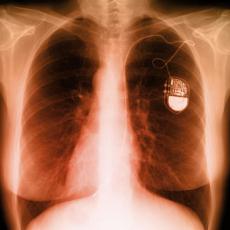The implantation of a pacemaker starts all the way from the designing and production of the device, to the final implantation of it on the patient. The first part of this process is one of the most important ones since this is the part where the device is created. Everything about it must be perfect. It should be the perfect size, it must be made with materials that he body will not have a negative reaction to, and it must, of course, work perfectly fine. This is the part that chemical engineers are a key part of. After this, the responsibility falls in the hands of the cardiothoracic surgeon. As time has gone by, many different techniques have been developed to implant pacemakers. With today’s amazing use of technology, implantation of pacemakers is performed without having to perform open heart surgery.
In the past years, many technological developments have helped improve not only pacemaker implantations but the field of medicine as a whole. In the specific case of pacemakers, their implantation is one that is usually done fairly quickly. As it was mentioned before, it does not require open heart surgery and for that reason, patients are usually able to go home within 24 hours if everything goes well. Even though open heart surgery is not required, this procedure can still be very uncomfortable so patients are provided with medication before the implantation in order to make them sleepy and to feel comfortable. Local anesthesia is used in most cases.
After the anesthesia has done its job and the patient is asleep, the implantation proceeds in the following steps:
- A 2 inches long incision is made in the upper chest
- Insulated wires (usually one or two) travel through the veins to reach the heart
- Once the wires reach the heart, they are connected to the pacemaker, which is then programed in order to meet the patient’s medical needs
- Once everything is programed, the pacemaker is inserted under the skin and the incision is closed
- After the incision is closed, the pacemaker is tested in order to make sure that it is doing what is supposed to do in a perfect manner
Even though it is a fairly simple procedure, patients stay in the hospital for the rest of the day. The following day, they are allowed to go home with the instructions provided by the doctor to take care of the incision. After patients leave the hospital they are encouraged to go back to their normal lives. However, movement of the arm closest to the incision might be limited, but that should be gone within a couple of days.
Pacemaker implantation is a very common procedure in which chemical engineers play a big role. They work in the designing of the device, so they are the ones that make sure to use the right materials and that make sure that the pacemaker will successfully perform its role. Even though it is very simple, pacemakers are able to control abnormal heart rythms that can be lethal if not treated.
For more information about pacemakers, click here

